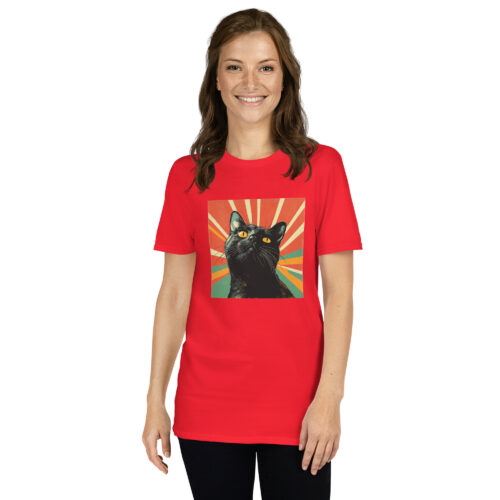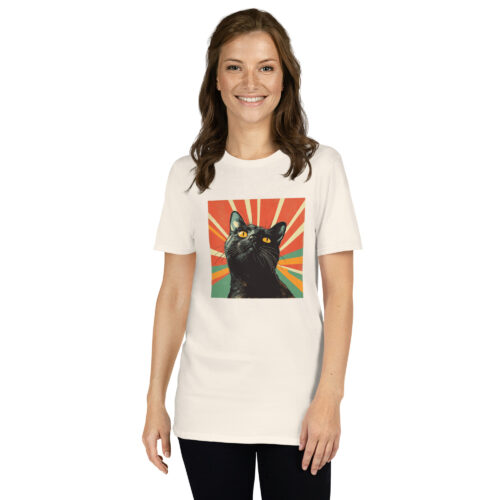
Curious About Cats: Top 10 Questions Cat Parents Are Asking in 2025
Table of Contents
Decoding Your Cat: Answers to the Top 10 Burning Questions of 2025
Hello, fellow feline enthusiasts! It’s that time when we settle in (maybe with a purring companion on your lap?) to explore what’s puzzling cat lovers most this year. Our whiskered friends have shared our homes for centuries, yet they continue to surprise us with their mysterious behaviors and quirky habits.
We’ve gathered the most-searched cat questions of 2025 and consulted with experts to bring you science-backed answers that will help you better understand your furry companion. Let’s unravel these feline mysteries together!
1. What is the #1 Smartest Cat Breed?
When it comes to feline intelligence, the Siamese often takes the crown! These chatty, blue-eyed beauties consistently rank at the top for several compelling reasons:
Why Siamese Cats Stand Out:
- Communication Skills: Their varied vocalizations show remarkable ability to express specific needs
- Trainability: They can learn tricks, play fetch, and even walk on leashes
- Problem-Solving: Watch a Siamese figure out how to open a cabinet, and you’ll be impressed!
Other Brainy Breeds Worth Mentioning:
Remember, though – while breed tendencies exist, every cat is unique! Your mixed-breed rescue might outsmart any purebred with the right environment and stimulation.
2. What Colors Can Cats See? Are Cats Color Blind?
Let’s tackle these related questions together! Contrary to old beliefs, cats don’t see in black and white, but their color vision differs significantly from ours.
The Simple Answer: Cats aren’t completely color blind, but they see a more limited range of colors than humans do.
How Human and Cat Vision Compare:
Your cat’s world is painted primarily in blues, greens, and yellowish grays. This vision evolved perfectly for hunting at dawn and dusk, prioritizing motion detection and low-light vision over color distinction.
When choosing toys, cats might show more interest in blue or green ones than red ones, which appear less vibrant to them!
3. Do Cats Know Their Names?
Yes, cats absolutely recognize their names! While they might not come running every time you call (they are cats, after all), research confirms they can distinguish their name from other similar words.
How Cats Learn Their Names:
- Positive Association: Your cat connects their name with good things like treats, pets, or playtime
- Repetition: Hearing their name frequently helps cement the learning
- Voice Recognition: Cats distinguish their owner’s voice from strangers
- Selective Response: They might “ignore” you sometimes, but they know exactly who you’re talking to!
A fascinating study showed cats can differentiate their names even when strangers call them, though they typically respond more enthusiastically to family members. This suggests they’re recognizing the specific sound pattern, not just reacting to a familiar voice.
Tip for Name Training: Be consistent with using their name, and always pair it with positive experiences rather than scolding.
4. Do Cats Like to Eat With Their Owners?
This charming question doesn’t have a one-size-fits-all answer, but many cat behaviors suggest some enjoy mealtime companionship.
Why Your Cat Might Join Your Meals:
- Routine Association: If you typically feed them when you eat, they’ve learned your mealtime signals their food time
- Social Bonding: Some cats genuinely enjoy sharing activities with their humans
- Curiosity: What’s on your plate might smell interesting!
- Security: Eating in your presence might feel safer, as in the wild, cats are vulnerable while feeding
Many cat owners report their feline friends seem more content eating when their humans are nearby. Some cats even develop the habit of waiting for their person to sit down before they’ll start their own meal.
Mealtime Manners: While your cat’s presence during dinner might be endearing, avoid feeding them from your plate. Human foods can be unhealthy or even dangerous for cats, and it encourages begging behavior.
5. Are Cats Nocturnal?
Despite their midnight zoomies that might wake you up, cats aren’t truly nocturnal. They’re actually crepuscular – most active during dawn and dusk.
Cat Activity Patterns:
- Peak Activity: Early morning and evening hours
- Why Twilight?: Their prey (birds, mice) are often active during these transition periods
- Adaptability: Domestic cats often adjust their schedules to match their humans’
Cat Sleep Facts:
- Cats sleep 12-16 hours daily (not all at once!)
- They take multiple short naps (polyphasic sleep)
- About 25% of their sleep is deep sleep; the rest is light “catnapping”
- During REM sleep, you might notice twitching whiskers, paws, or eyelids
If your cat’s predawn activities are disrupting your sleep, try a vigorous play session before bedtime followed by a small meal. A tired, satisfied cat is more likely to let you sleep in peace!
6. Why Do Cats “Make Biscuits” (Knead)?
That adorable pushing of paws against soft surfaces (often your lap!) serves several important purposes in cat behavior.
The Science Behind Kneading:
- Kittenhood Connection: Kittens knead their mother’s belly to stimulate milk flow during nursing
- Comfort Signaling: When adult cats knead, they’re expressing contentment and security
- Scent Marking: Cats have scent glands in their paw pads, so kneading leaves their signature
- Nesting Behavior: Wild ancestors kneaded tall grass to create comfortable resting spots
When your cat kneads on you, take it as the ultimate compliment! They’re essentially saying, “You make me feel as safe and happy as my mother did.” That’s quite the honor in cat language.
Ouch Factor: If those little claws are making kneading painful, try gently placing a blanket between you and your cat. Never punish kneading – it’s deeply instinctual and means your cat feels secure with you.
7. Will Cats Eat You When You Die?
This macabre but frequently asked question deserves a straightforward answer: Yes, under certain circumstances, cats might consume deceased owners if they have no access to other food.
Important Context:
- This behavior is driven purely by survival instinct, not malice or lack of affection
- It typically only occurs when the cat is trapped without access to other food sources
- Documented cases exist in forensic literature, but they’re relatively rare
- This behavior has absolutely no reflection on the bond between cat and owner during life
This sobering reality simply highlights the practical nature of cats as survivors. It doesn’t diminish their capacity for affection or the genuine bond they share with us during our lives together.
8. Which Cats Are Hypoallergenic?
If you’re sneezing around cats but still longing for feline companionship, you might have heard about “hypoallergenic” breeds. Here’s the truth: no cat is completely allergen-free.
What Really Causes Cat Allergies: Most people aren’t allergic to cat hair itself but to a protein called Fel d 1, found in:
- Cat saliva
- Skin oils and glands
- Dander (dried skin flakes)
When cats groom themselves, they spread saliva on their fur, which dries and becomes airborne with dander.
Breeds That May Cause Fewer Reactions:
Before Adopting: Spend significant time with the specific cat you’re considering. Allergen levels vary even within breeds, and your individual sensitivity is unique. No cat breed guarantees an allergen-free experience.
9. Can Cats Have Peanut Butter?
While a tiny amount of plain peanut butter isn’t toxic to cats, it’s generally not recommended as a treat.
Why Peanut Butter Is Problematic:
- High Fat Content: Can lead to weight gain and potentially pancreatitis
- Choking Hazard: The sticky texture can be difficult for cats to manage
- Digestive Issues: May cause vomiting or diarrhea in some cats
- DANGER – Xylitol: Some peanut butter (especially “natural” varieties) contains xylitol, which is extremely toxic to cats
Healthier Treat Alternatives:
- Commercial cat treats (in moderation)
- Small pieces of cooked, unseasoned chicken or turkey
- Catnip or cat grass for those who enjoy it
As obligate carnivores, cats need meat-based proteins. Their digestive systems aren’t designed to process peanut butter, and it offers no nutritional benefits for them.
10. Why Do Cats Always Land on Their Feet?
The remarkable ability of cats to (almost) always land on their feet has fascinated humans for centuries. This incredible skill, called the “righting reflex,” is a testament to feline evolution and physiology.
How the Righting Reflex Works:
- Vestibular System: Located in the inner ear, this system tells cats which way is up, even when falling
- Flexible Spine: Cats have an unusually flexible backbone with more vertebrae than humans
- Two-Phase Rotation: During a fall, cats first rotate the front half of their body, then the back half
- Visual Cues: Cats use their eyes to help orient themselves during falls
- Preparation for Impact: They extend their legs to absorb shock and distribute landing forces
This extraordinary ability develops when kittens are about 6-7 weeks old and is fully mature by 9 weeks. Research shows cats need about 30 centimeters (12 inches) of falling distance to complete a full rotation – which explains why very short falls can sometimes result in awkward landings.
The Science Behind It: The physics behind this feat is fascinating. Cats twist their bodies while falling, but because they have no external force to push against (they’re in free fall), they must use the conservation of angular momentum. By tucking in the front legs and extending the back legs (or vice versa), they create a counterbalance that allows rotation.
Not Actually Invincible: Despite this amazing ability, cats can and do injure themselves in falls. Ironically, moderate-height falls (from 2-7 stories) sometimes cause fewer injuries than falls from lower heights, as cats have more time to properly orient themselves and spread their bodies to increase air resistance.
Safety First: Never test this reflex! While fascinating, the righting reflex doesn’t make cats invulnerable. Always ensure windows in high-rise buildings have secure screens and keep balconies safe for curious cats.
Understanding Our Mysterious Companions
From their specialized color vision to their kneading habits and intelligence variations, our cats are fascinating creatures with behaviors deeply rooted in their evolutionary history.
Even the more surprising aspects of cat behavior—like potential scavenging—remind us that beneath their domesticated exterior, cats retain the survival instincts that have helped their species thrive for thousands of years.
By understanding these facets of feline biology and behavior, we can create better environments for our cats and strengthen the incredible bonds we share with them. After all, the more we know about our purring companions, the better we can meet their needs and appreciate their unique place in our lives.
What other cat questions have you been wondering about? Share in the comments below, and we might address them in our next feline feature!
Remember, while this article provides general information about cats, each feline friend is unique. When in doubt about your cat’s health or behavior, always consult with your veterinarian for personalized advice.
Loved this post? Explore more helpful cat care tips on our cat blog and join our community of cat lovers to share stories and advice!
Disclosure: This post contains affiliate links. If you purchase through these links, we may earn a commission at no extra cost to you.










